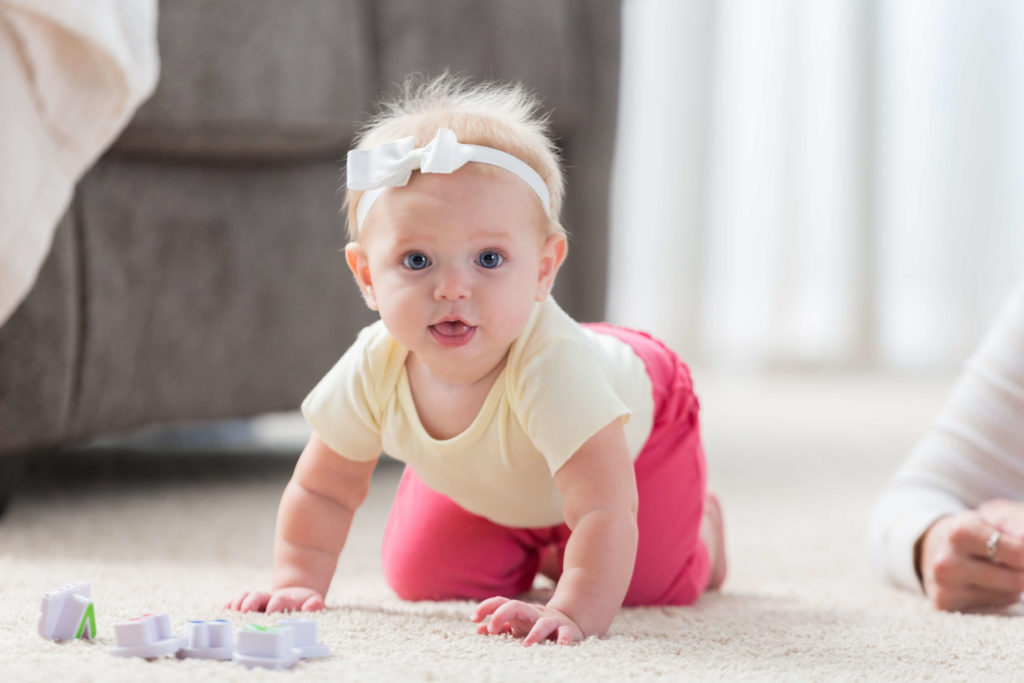Gross Motor Milestone Series: Crawling

Crawling is a major milestone that really allows babies to independently explore their environment. Crawling strengthens the extensor muscles of the trunk and head and increases core stability, which are important for later gross motor skills, such as standing and walking. It promotes shoulder stability, which is important for fine motor tasks such as handwriting and tying shoelaces. It’s a repetitive movement that stimulates brain growth and control of cognitive processes, such as “I see something, I want it, and now I am going to make my body go to it.”
Crawling uses both the right and left sides of the body and promotes communication between the right and left sides of the brain. Throughout the progression of crawling, important vision skills are developing, including the ability of the eyes to work together, to look at an object in the distance (target) and then focus close up (on hands), and is the start of training eye hand coordination. If your baby isn’t crawling by 9-10 months of age, he or she might benefit from a physical therapy evaluation.
Tummy Time
- The first step to promote crawling is to practice tummy daily every day, multiple times a day.
Hands and Knees
- Help your child lift up onto hands and knees, supporting around the trunk. Gradually decrease the amount of support you provide to help up into the position. See if your child can hold the position with help around the trunk, again gradually decreasing the amount of support you are providing. Once your child can maintain this position with minimal support, practice rocking back and forth on hands and knees.
Reaching on Hands and Knees
- Once your child can rise into and maintain hands and knees without assistance, start to have them lift one hand at a time to reach for a toy. This allows them to practice un-weighting a hand and shifting their weight, which they will need to do in order to move their body forward. Make sure to practice lifting the right and left arms. If your child only wants to reach on one side, gently apply light pressure to the top of that hand in order to force them to reach with the non-preferred side.
Crawling Forward
- Once your child can get into, maintain, and reach with each arm while in hands and knees, it is time to practice moving forward. Place toys 4-5 feet in front of them. Physically assist by pushing on the child’s feet or guiding their arms. Play chase games, and crawl around, under, and through obstacles.
Crawling Over
- Place items such as hula hoops, jump ropes, towel rolls, or pillows on the floor and encourage your child to crawl over them to get a toy. Gradually increase the height of the barrier until they can crawl up and over both of your legs when they are straight out together in front of you.
Always make sure to celebrate the small successes, and make it fun! If your baby isn’t crawling, they might benefit from a physical therapy evaluation. Contact MOSAIC Health & Rehab to schedule a free screen or to set up an evaluation. Check out Gross Motor Milestones: Standing to learn what your child should develop next. To learn more, check out this great milestone moments list from the CDC.
